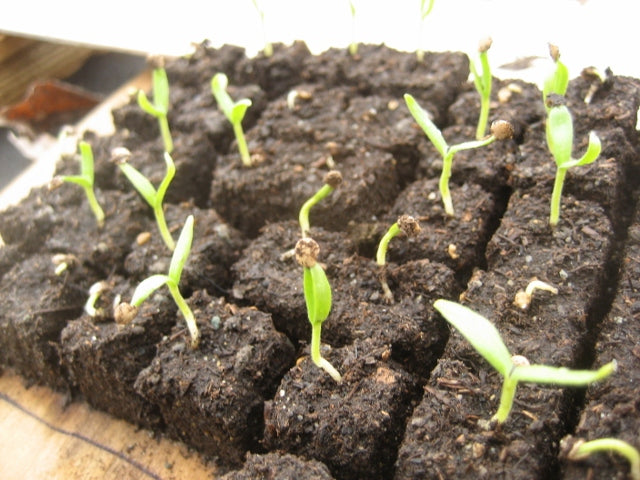It begins in February.
"It's too late to start Tomatoes now, right?"
"I should have already started all these herbs indoors, I think."
"I won't have time to start these until March... is that okay?"
One by one, nervous gardeners approach us, in person at shows or by e-mail, convinced that the one-single-day-that-is-the-best-day-for-starting-tomato-seeds has come and gone, stranding them on their porch with a pile of useless seed packets.
Dear gardeners, the earth is good; it can absorb all your worries.
-
Tomatoes
Some people start tomatoes in February; some in late April. Guess what? You can be equally successful either way! Luckily, tomatoes--one of the most popular of garden crops--are also one of the most forgiving. Started them really early? They'll get stressed out in their cramped quarters, but they'll make it to transplant time and then will perk right up. Still kind of small when transplant time arrives? No worries: after the first spell of 80+ degree days, they'll take off like rockets. I've been very successful starting tomatoes for September/October harvest in early- to mid-May. This later start date results in young, vibrant plants at a time of year when your other vines are beginning to give up the ghost. I wouldn't try much later than late May in northeastern climates--but anytime before that, you're good!
-
Peppers
Peppers are notoriously slow to germinate, but by providing ideal conditions (temps of 80+ and plenty of moisture), you can make them pop in about 4-5 days. This means that you can ignore the usual advice to start them in mid-March and instead leisurely get your peppers going anytime from mid-March to early-May. If you primarily like green peppers, you can start them even a little later than this with good results, but if your goal is ripe sweet pods, stick to early May as a cut-off (pepper plants need plenty of time to sweeten and color up their pods).
-
Eggplants
Treat similarly to peppers. Eggplants can be pushed even a little later, as their fruit is always eaten at the immature stage, and it's great to have plenty in the fall when baked eggplant dishes are so appealing. Again, as with tomatoes, plants that are slightly younger going into the cooler conditions of September and October tend to fare better and yield more.
-
Peas, spinach, arugula, radishes, and other cool-season spring crops.
The usual advice for these crops is to sow as soon as the soil can be worked. These seeds will absolutely be fine under those frosty conditions--but they also do well planted later, and they catch up on the early-sown seeds quickly. All of these crops can be sown up to your last spring frost date with no problem. It also allows you to extend the harvest season of these crops by a couple of weeks before the summer vegetables take over.
Got any experience with sowing late? Share in the comments!






